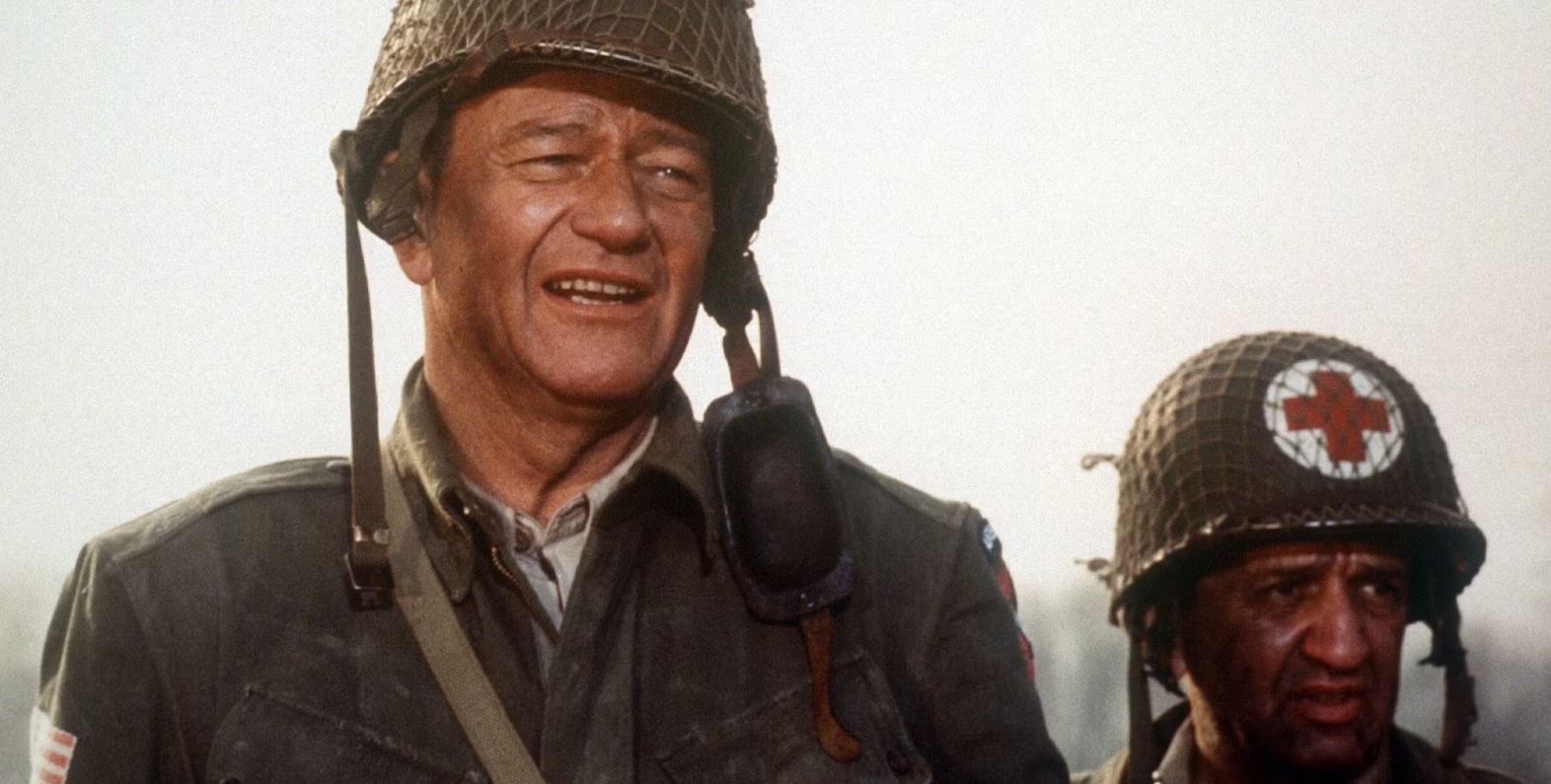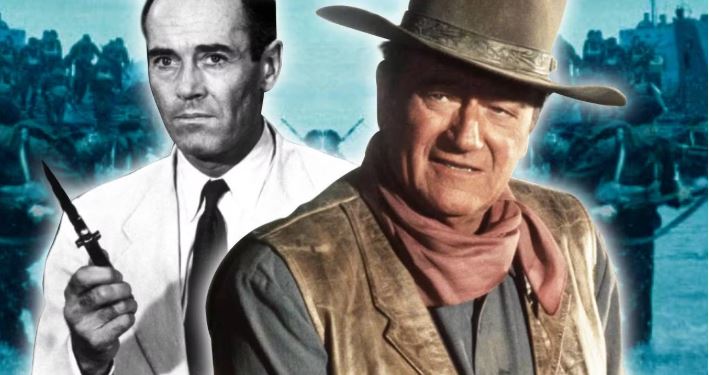Over six decades later, The Longest Day still stands out as one of the most well-made World War II movies ever put on screen. It aimed big — telling the D-Day story from not just one side but through the eyes of American, British, French, and German soldiers. To pull that off, producer Darryl F. Zanuck, renowned for his sprawling movies, including the troubled U.S.-Japan co-production Tora! Tora! Tora!, which roped in Akira Kurosawa, brought in three directors. Ken Annakin, Andrew Marton, and Bernhard Wicki each helmed a different front of the war. John Wayne and Henry Fonda joined an expansive, star-studded ensemble cast, including Sean Connery, Robert Mitchum, and Richard Burton, to deliver a stunning recreation of the landings in Normandy with spectacle and authenticity.
Featuring real paratroopers, actual battle locations, and veterans guiding the production, the film doesn’t hold back in showing the full reality of war, be it the chaos, the solidarity, the fear, and everything in between. Just like A Bridge Too Far details Operation Market Garden with precision, The Longest Day’s black-and-white dramatization of D-Day offers the most compelling portrayal of one of World War II’s most pivotal events.
Three Directors and a Cast of Thousands Built One of the Best War Movies Ever Made

More than just a movie, The Longest Day is a full-scale reenactment of D-Day. The story draws from firsthand accounts by veterans who experienced the operation. With a cast of 42 A-list stars and thousands of extras, including real paratroopers leaping from planes over Normandy, the film relies on its sheer cinematic muscle. Adopting an ambitious storytelling approach, with no CGI and no shaky-cam closeups, the film is one of the most thoughtful and balanced portrayals of the D-Day invasion, presenting the viewpoints of major parties involved. The Longest Day doesn’t try to pull you into the action; it’s just a wide-angle view of the day as it happened, leaving judgment to the viewer.
The three directors assigned to the project concentrated on the nitty-gritty details of accounts within their jurisdiction: Annakin handled the British and French scenes, Marton directed the American sequences, and Wicki oversaw the German segments. The first hour of the film’s near-three-hour runtime builds tension by following the Allied powers as they strategize and the Axis powers as they wait in anticipation. There’s the Allies’ debate over the timing of the attack in bad weather, French villagers smuggling intel, and German commanders bickering over Hitler’s absence. This sequential, documentary-like approach to the film’s storytelling forms the foundation of its epic action. When the landings do take place, it’s two hours of relentless bursts of gunfire and explosives across multiple fronts, revealing not just the war’s carnage but its chaos as well. From the air to the sea, The Longest Day captures the invasion of Normandy in painstaking detail.
John Wayne and Henry Fonda Contribute to Performances That Define a Genre and Technical Mastery

In a film where most actors have limited screen time, John Wayne and Henry Fonda are among the few given more prominent roles. John Wayne plays Lt. Col. Benjamin Vandervoort, the real-life figure who broke his ankle during the landing and ended up becoming a war hero for how he and his unit defended the town of Sainte-Mère-Église. For the few minutes he is on-screen, Wayne plays Vandervoort with his typical larger-than-life screen presence. He urges his troops to march on, motivating them with his speeches and lived experience (although Vandervoort was almost twice as young as Wayne’s 55 years during the war). Henry Fonda, on the other hand, portrays Brig. Gen. Theodore Roosevelt Jr., the president’s son who refuses to sit out of front-row action and history just because of his name. However, the film doesn’t treat them — or anyone else — as typical heroes you’d often find in a character-driven drama. Its focus is on showing the events as they really happened.
With an 84% rating on Rotten Tomatoes, The Longest Day continues to earn respect for its lasting power. Whether you’re coming back to it out of nostalgia or watching it for the very first time, its scale and ambition still command awe. In its three hours, the film proves why it’s a monument to historical cinema.
